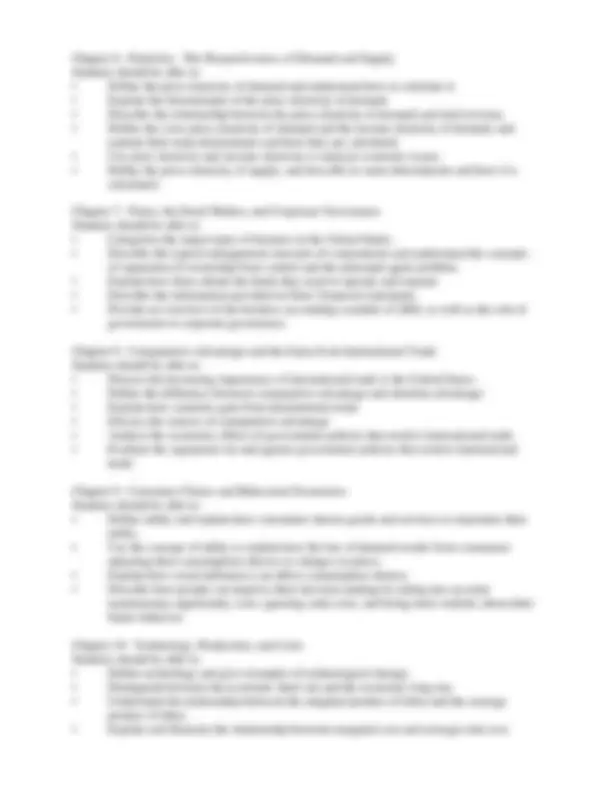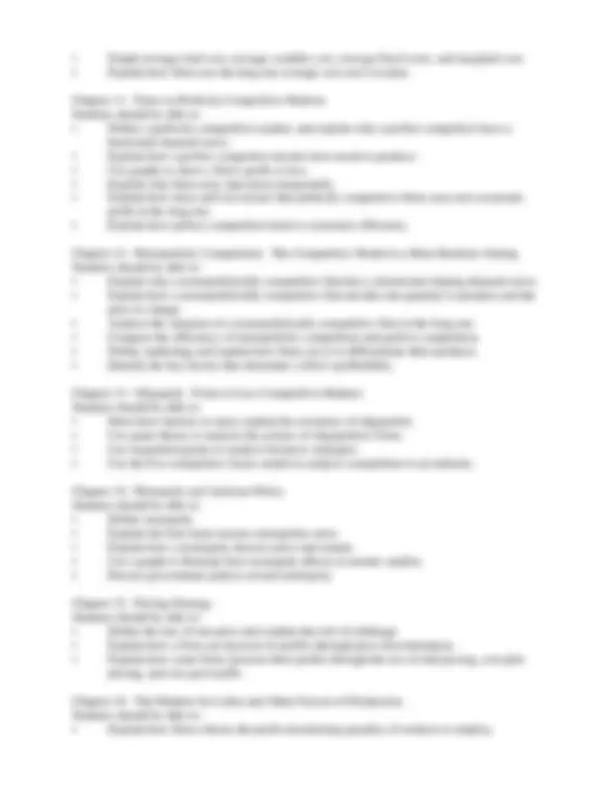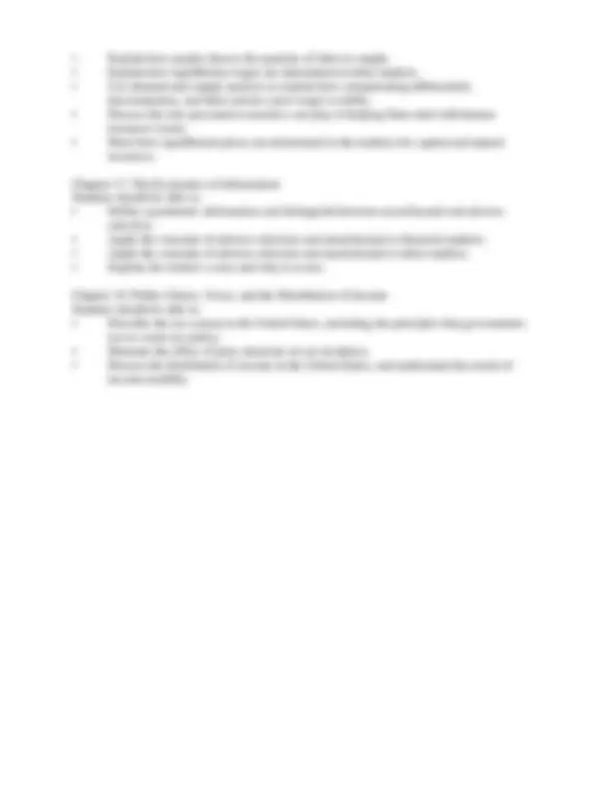





Study with the several resources on Docsity

Earn points by helping other students or get them with a premium plan


Prepare for your exams
Study with the several resources on Docsity

Earn points to download
Earn points by helping other students or get them with a premium plan
Community
Ask the community for help and clear up your study doubts
Discover the best universities in your country according to Docsity users
Free resources
Download our free guides on studying techniques, anxiety management strategies, and thesis advice from Docsity tutors
The learning objectives for the micro principles of economics course, as outlined in the textbook 'economics' by hubbard and o'brien. The objectives cover various topics such as economic foundations, trade-offs, demand and supply, economic efficiency, externalities, elasticity, firms, international trade, consumer choice, technology, and markets. Students are expected to understand these concepts at three levels: information recall, comprehension, and application. The course aims to help students attain competency at levels 2 and 3, with examinations focusing on the ability to apply economic tools to real-world situations.
Typology: Exams
1 / 5

This page cannot be seen from the preview
Don't miss anything!




Economics 101 Principles of Economics - Micro
CHAPTER LEARNING OBJECTIVES Prof. Dirk Yandell
Text: R. G. Hubbard and A. P. O’Brien, Economics , 2nd^ Updated Edition, Pearson Prentice Hall, 2009 (or 2nd^ Edition, 2008)
Introduction:
The learning objectives listed below are by chapter in the course textbook. They are intended to assist you as you read and study the course material. These objectives are designed to let you know what you should be able to do or explain when you successfully complete each chapter.
You are expected to understand the course content on three levels:
(1) Information recall and recognition Many facts, definitions and principles have to be committed to memory. (2) Comprehension You should internalize what you have learned and be able to explain specific concepts in your own words rather than using memorized definitions from the book. (3) Application You should be able to apply what you have learned in situations or current events that are not specifically covered in the course.
Examinations will include questions to test your mastery on all three of these levels, with relatively more emphasis on how well you can apply appropriate economic tools to explain situations or events that may not be exactly the same as those covered in class.
My course is organized to help you attain competency at levels (2) and (3). I assume that you will read the textbook and use other handouts and online resources for level (1) learning.
In class, I will: (1) explain the more difficult concepts, (2) show how these concepts are used or how they can be applied, and (3) provide examples, illustrations, and experiments to help you understand and apply the economic tools, and (4) answer your questions and give you short practice exercises.
Learning Objectives
Chapter 1: Economics: Foundations and Models Students should be able to:
Chapter 2: Trade-Offs, Competitive Advantage, and the Market System Students should be able to:
Chapter 3: Where Prices Come From: The Interaction of Demand and Supply Students should be able to:
Chapter 4: Economic Efficiency, Government Price Setting, and Taxes Students should be able to:
Chapter 5: Externalities, Environmental Policy, and Public Goods Students should be able to:
Chapter 11: Firms in Perfectly Competitive Markets Students should be able to:
Chapter 12: Monopolistic Competition: The Competitive Model in a More Realistic Setting Students should be able to:
Chapter 13: Oligopoly: Firms in Less Competitive Markets Students should be able to:
Chapter 14: Monopoly and Antitrust Policy Students should be able to:
Chapter 15: Pricing Strategy Students should be able to:
Chapter 16: The Markets for Labor and Other Factors of Production Students should be able to:
Chapter 17: The Economics of Information Students should be able to:
Chapter 18: Public Choice, Taxes, and the Distribution of Income Students should be able to: